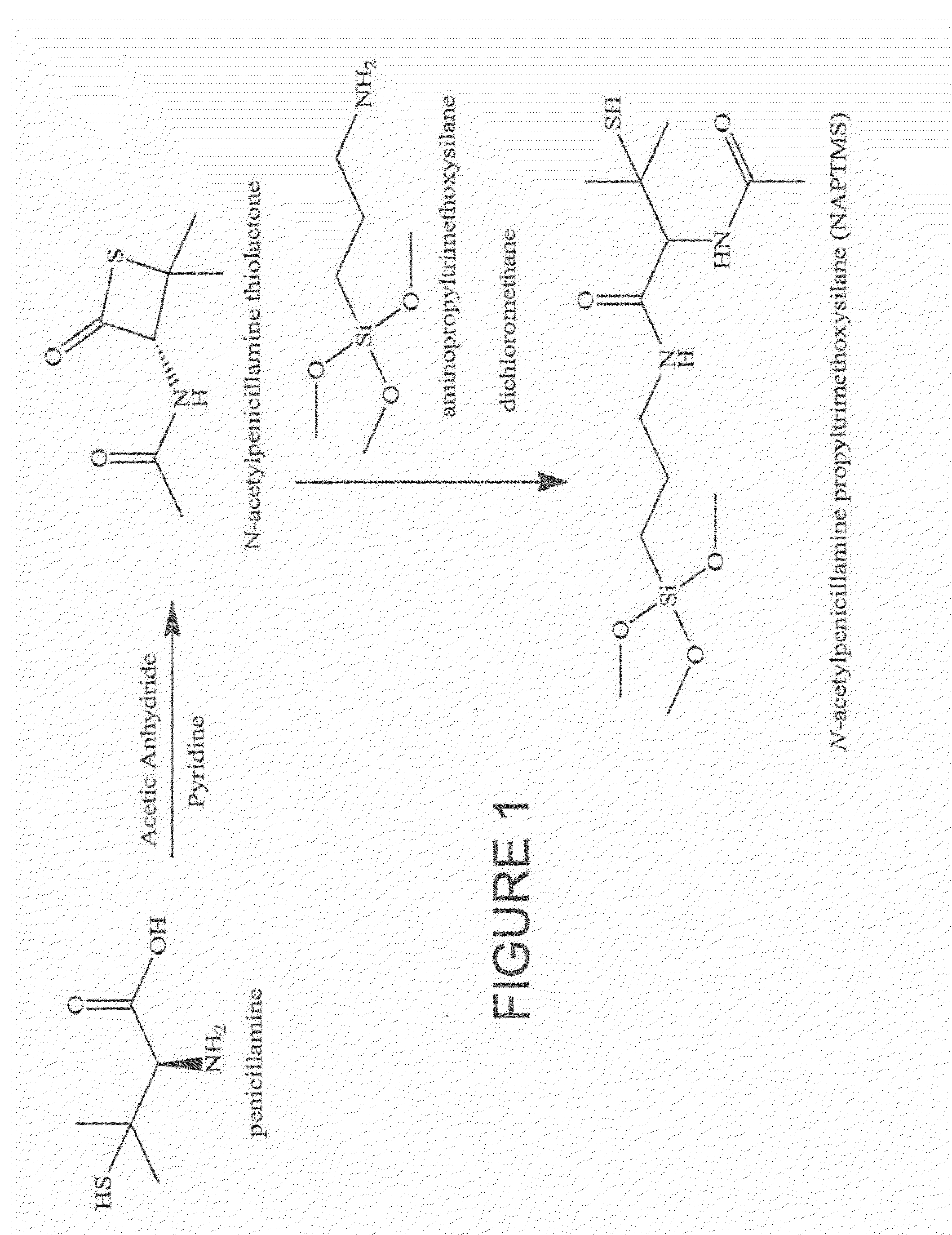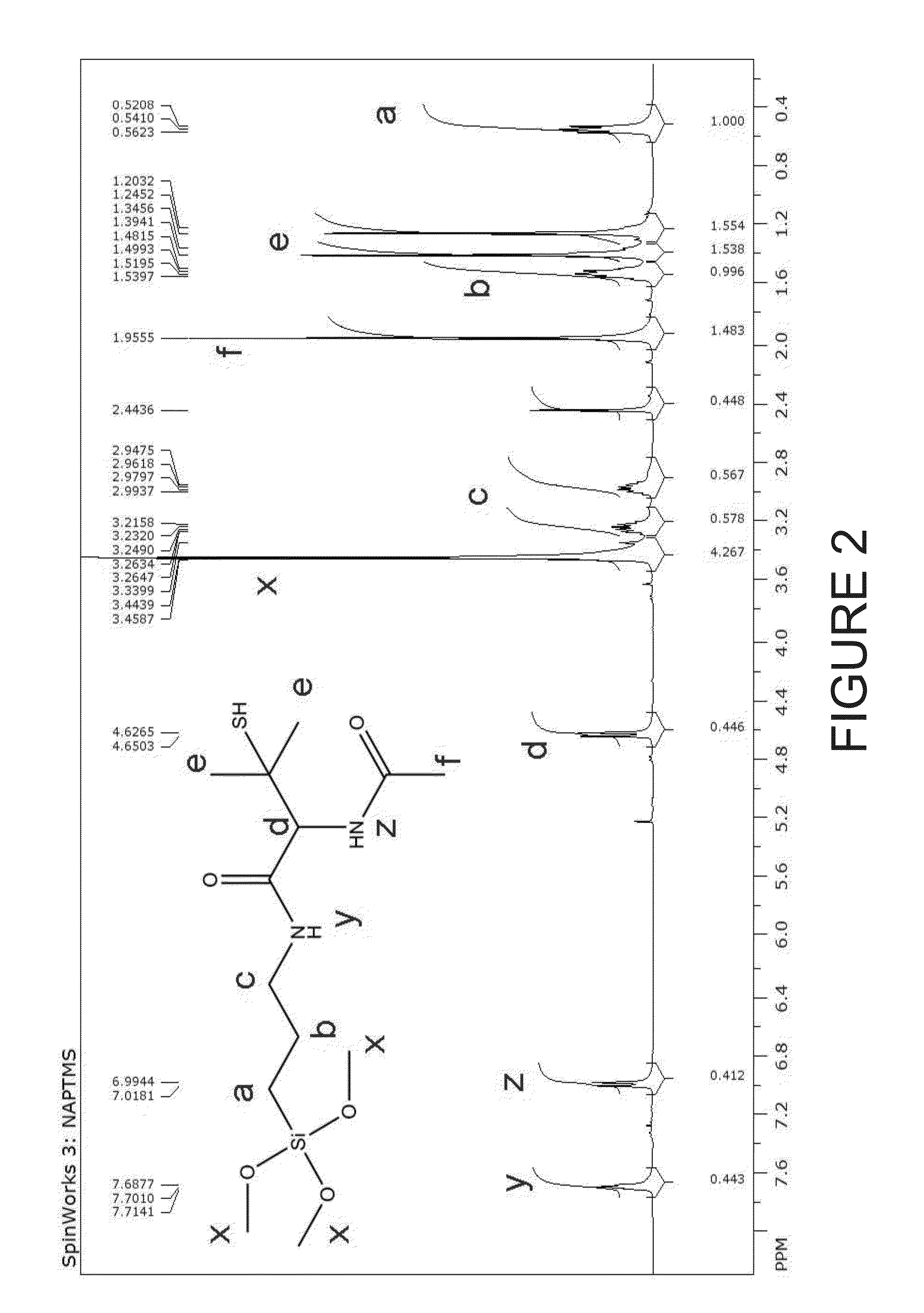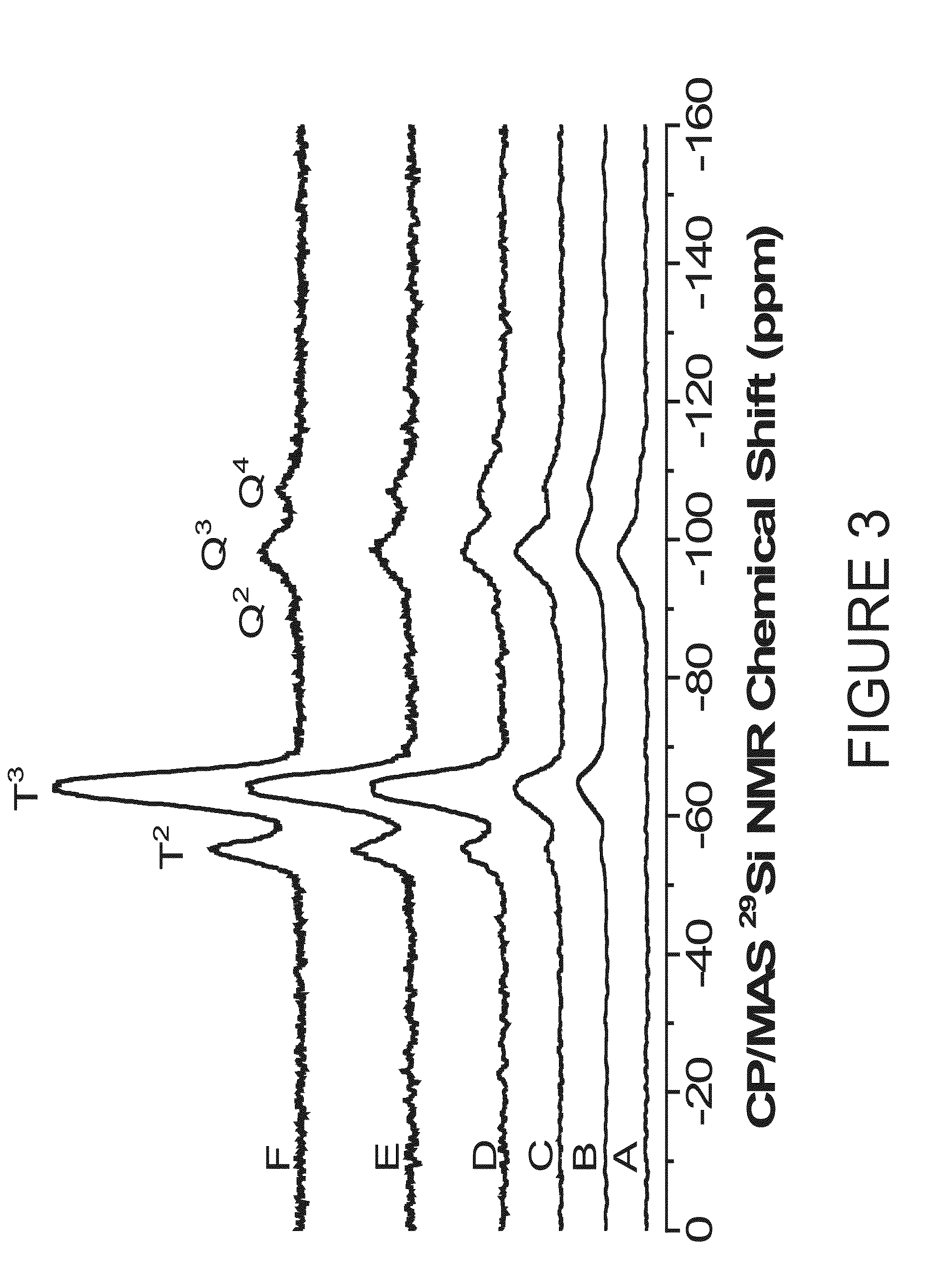Nitric oxide-releasing s-nitrosothiol-modified silica particles and methods of making the same
a technology of s-nitrosothiol and silica, which is applied in the field of s-nitrosothiolmodified silica particles, can solve the problems of slow application of low molecular weight no donors, inability to tune particle size, and inability to stor
- Summary
- Abstract
- Description
- Claims
- Application Information
AI Technical Summary
Benefits of technology
Problems solved by technology
Method used
Image
Examples
example 1
MPTMS
[0050]Ratios of mercaptosilane and alkoxysilane (25-85 mol % MPTMS, balance TMOS or TEOS) were added either as a bolus injection or dropwise via a Kent Scientific Genie Plus syringe pump at a flow rate of 0.25-3.0 mL / min through an 18.5 gauge needle to a solution of ethanol, water, and ammonium hydroxide. Solution was stirred for 2 h at room temperature, collected via centrifugation at 4500 rpm (10 mins), washed twice with 40 mL EtOH, recollected, and dried overnight at ambient conditions.
[0051]Our initial attempt to synthesize thiol-containing silica particles was based on a bolus injection of 3-mercaptopropyltrimethoxysilane (MPTMS) and alkoxysilane into EtOH / NH4OH solution, The resulting concentrations of ammonia, water and total silane were 3.3, 8.0, and 0.2 M, respectively. Tetramethoxysilane (TMOS) proved to be a sufficient backbone silane for co-condensation with MPTMS as their combination (at various mole percentages) resulted in the formation of a white precipitate. (˜...
example 2
MPMDMS
[0054]Another thiol-functionalized monomer, 3-mercaptopropylmethyldimethoxysilane (MPMDMS), was also investigated. Unfortunately, the product yield (˜5 mg) formed using MPMDMS with either TMOS or TEOS was significantly lower than MPTMS. The substitution of one of the hydrolyzable methoxy groups with a nonhydrolyzable methyl linkage in MPMDMS (vs. MPTMS) appears to decrease the resulting hydrolysis rate under basic conditions, possibly due to the inductive effect of electron density donation to the Si atom. As a result, the reaction with hydroxide anion to hydrolyze the silane may be inhibited. Particle formation may even be further limited as each MPMDMS molecule is capable of forming only two siloxane bridges. Consequently, particle formation using MPMDMS was unsuccessful.
example 3
Characterization of First Generation Mercaptosilane-Based Silica Particles
[0055]Solid-state cross polarization / magic angle spinning (CP / MAS) 29Si (71.548 MHz frequency) nuclear magnetic resonance (NMR) spectroscopy was performed on a Bruker 360 MHz DMX spectrometer (Billerica, Mass.). Particles were packed into 4 mm rotors and spun at 8.0 kHz. Spectra were collected at 5000 scans with the determination of chemical shifts in parts per million relative to an external TMS standard. Nitric oxide release was measured in real time (1 sec intervals) using 5 a Sievers NOATM 280i Chemiluminescence Nitric Oxide Analyzer (NOA) (Boulder, Colo.). Calibration of the NOA was performed with both air passed through a Sievers NO zero filter and 26.39 ppm NO gas (balance N2). Nitric oxide-releasing particles were immersed in 25 mL of deoxygenated solution and sparged with an 80 mL min-1 N2 stream. Additional N2 was supplied to the reaction flask to match the collection rate of the NOA at 200 mL min-1....
PUM
| Property | Measurement | Unit |
|---|---|---|
| Molar density | aaaaa | aaaaa |
| Molar density | aaaaa | aaaaa |
| Molar density | aaaaa | aaaaa |
Abstract
Description
Claims
Application Information
 Login to View More
Login to View More - R&D
- Intellectual Property
- Life Sciences
- Materials
- Tech Scout
- Unparalleled Data Quality
- Higher Quality Content
- 60% Fewer Hallucinations
Browse by: Latest US Patents, China's latest patents, Technical Efficacy Thesaurus, Application Domain, Technology Topic, Popular Technical Reports.
© 2025 PatSnap. All rights reserved.Legal|Privacy policy|Modern Slavery Act Transparency Statement|Sitemap|About US| Contact US: help@patsnap.com



